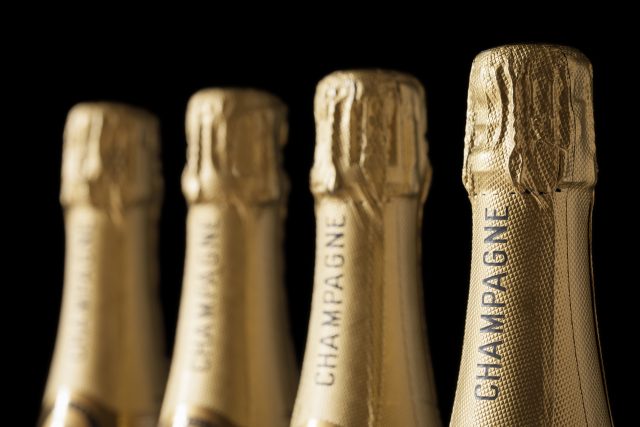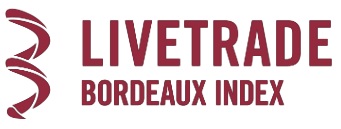Sparkling investment: Champagne continues to gather momentum
There has been an explosion in the Champagne market in recent times – with prices up 68% over the last 3 years and more than half of those gains (53%) coming since January 2021. db talks to Bordeaux Index about what is fuelling this growth.

“It’s a combination of the global reopening and the explosion in ultra-high net worth that is causing a supply sweet spot,” Matthew O’Connell, of Bordeaux Index tells db.
“Wealthy people are getting wealthier, and restaurants, which had wound down their stocks, are reopening. Together, that has squeezed things and driven the prices up.”
Since September last year, Champagne prices have spiked, with price rises of 35% overall in the last four months, and some cuvees gaining more than 50%, he notes.
However, while trade has increased across all brands in 2021 O’Connell notes interesting patterns that show growth has been at “markedly different amplitudes”.
“For example, while Krug and Dom Perignon only nudged up against their three-year average, trade positively leapt up for Roederer (for which read Cristal) and Taittinger (Comtes) and also fared well at Bollinger” O’Connell points out.
Bordeaux Index’s LiveTrade online platform saw the 2021 volume increase on the three-year average by 84% for Cristal, with Comtes only a fraction lower at 83%, ahead of Bollinger’s 37%, Krug’s 19% and Dom Perignon’s more modest 15% rise.
However, he notes that the impact of new releases needs to be taken into account – for example while both the Taittinger and Krug 2008 were hugely anticipated and rapturously received, the former had greater volume and secondary market activity, impacting the prices.
Prime vintages
The data shows that, as always, prime vintages have gathered price momentum over the last year, dominating all the top spots in 2021, which is unsurprising given the relative lack of availability. More expensive wines have also generally shown greater price appreciation.
O’Connell points out that the appetite has also swung back in favour of the top vintages after several years in which much of the action had been around the cheaper iterations. This, he says is a cyclical process – as people acquire the top vintages, these shoot up in price, prompting interest in lesser vintages that then catch up in price.
This year, Champagne Salon was the established star performer, fuelled by demand among the ultra-high net worth accounts.
“It’s a super-premium cuvée, so when you get increased demand, it goes up quicker than other Champagnes,” he adds.
Drilling down, the Salon 2002 saw a stellar performance, with a one-year price gain of 105%, followed by the Krug 2002 (80%), and Cristal 2008 (80%), Krug 1996 (76%) and the Dom Perignon Rosé 2002 (66%)
Trio of good years
However, O’Connell points out an anomaly in the most recent line-up. The fantastic 2012 vintage – which he says is broadly of the same quality as 2002 or 2008 – has suffered due to the consistently high scores achieved by the 2013 and 2014 vintages. This has made buyers think twice about paying top dollar for it, as much as they might if the surrounding vintages were not as good.
“It’s unusual to have three vintages working well together,” he explains. “It has been working as a negative for the 2012 – it’s nowhere near the price of the ’08 for example, despite being of the same quality, which is an interesting dynamic.”
Partner Content
He notes that the release of the Bollinger 2014 this year went well, and there has also been strong demand for the Cristal ’14, and it will be interesting to see if the 2012 Comtes release sees strong demand and indeed how it then performs in the market from there.
However, O’Connell argues that Champagne is presently still more brand driven than vintage drive.
“If you look at the cuvee, it’s going up regardless of the vintage,” he explains. “That tends to happen when the market is moving quite quickly, suddenly you get a £200 gap between one vintage and another but that quickly rectifies itself.”
“People are definitely focusing on brands instead of vintages – and that’s probably likely to continue.”
International dynamics?
The UK and Europe continue to be Champagne’s core market for sales, together accounting for a little under half of sales by value in 2021. However, as O’Connell explains, Asia and the US are growing at a faster rate – 2021 saw LiveTrade activity in Asia by 40% and 65% in the US over the average of the previous 3 years, compared to only 30% across the UK and Europe.
“Asia and US are definitely buying more prestige champagne,” he says. “Although the Asian market lags behind in volumes – Champagne still on the rise in Asia as a wine for collecting – there is undoubtedly more Asian consumption of Champagne. Meanwhile US volumes were up significantly, having overtaken the UK as Champagne’s biggest export market by volume as well as value for the first time.”
The wine space in the US is experiencing quite interesting growth, he adds. “It’s a very fragmented market, which is quite interesting, but at the top end of the Champagne market, maybe there is still more growth to come,”
Given the strength of the Asian and US market, O’Connell sees no sign that the market will fall soon, despite the current conflict in Ukraine and the knock-on effect it is having on economies around the world: “wine tends to show very limited correlation with macro events and we expect that to be the case here also”
“We don’t think prices of wine will go down with the latest situation, the only questions might be the speed of the upwards movement,” he says.
He points to the resilience of the wine market, and even if there is a very slight slowdown, it has maintained strong momentum. Fine wine prices have already risen 4% this year – which would imply market performance of over +20% if the pace continues across the year.
“Our base code says wine is going up each year due to the ultra-high net worth dynamic, wealthy people have more money to spend and expect to be wealthier at the end of this year. That is really positive for wine.”
 Buy, sell and trade the world’s top fine wine and whisky at the click of a button
Buy, sell and trade the world’s top fine wine and whisky at the click of a button
LiveTrade is Bordeaux Index’s multi award-winning online trading platform.
Open to all market participants on the same terms and offering full supporting logistics capabilities, any top wine or whisky with guaranteed condition can be added to the platform.
Transparent, intuitive and constantly updated, LiveTrade offers a competitive price and the ability to sell instantly, revolutionising the world of fine wine and whisky trading.
Overhauling deep-rooted market limitations, LiveTrade has an unprecedented portfolio management system that allows users to upload their portfolios, understand the value in real time and trade directly from one platform, regardless of where their assets are professionally stored across UK and Europe.
Related news
Strong peak trading to boost Naked Wines' year profitability




